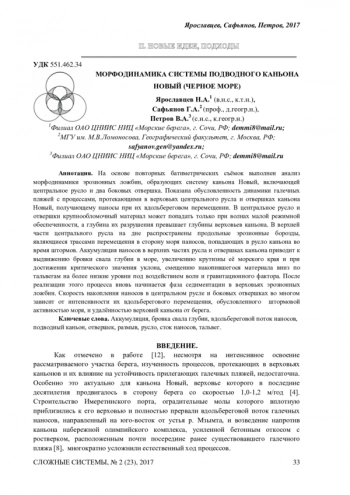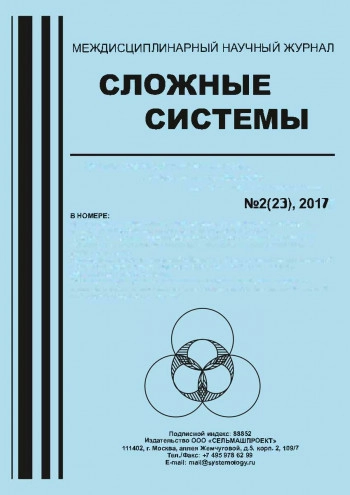На основе повторных батиметрических съѐмок выполнен анализ морфодинамики эрозионных ложбин, образующих систему каньона Новый, включающей центральное русло и два боковых отвершка. Показана обусловленность динамики галечных пляжей с процессами, протекающими в верховьях центрального русла и отвершках каньона Новый, получающему наносы при их вдольбереговом перемещении. В центральное русло и отвершки крупнообломочный материал может попадать только при волнах малой режимной обеспеченности, а глубина их разрушения превышает глубины верховьев каньона. В верхней части центрального русла на дне распространены продольные эрозионные борозды, являющиеся трассами перемещения в сторону моря наносов, попадающих в русло каньона во время штормов. Аккумуляция наносов в верхних частях русла и отвершках каньона приводит к выдвижению бровки свала глубин в море, увеличению крутизны еѐ морского края и при достижении критического значения уклона, смещению накопившегося материала вниз по тальвегам на более низкие уровни под воздействием волн и гравитационного фактора. После реализации этого процесса вновь начинается фаза седиментации в верховьях эрозионных ложбин. Скорость накопления наносов в центральном русле и боковых отвершках во многом зависит от интенсивности их вдольберегового перемещения, обусловленного штормовой активностью моря, и удалѐнностью верховий каньона от берега.
On the basis of repeated the bathymetric surveys is made the analysis of the morphodynamics of the erosive hollows which are forming system of a canyon New, including the central bed and two side western ravine tributaries. A condition of dynamics of pebbly beaches with the processes proceeding in upper courses of the central bed and the ravine tributary of a canyon New which on lithodynamic communication with a coastal zone can be carried to the lateral type receiving deposits at their alongshore movement is shown. Grain size material can get to the central bed and ravine tributary only at storm in which depth of a collapse of waves is more than depth in their upper courses which repeatability is not considerable. The longitudinal erosive furrows which are trasses of movement towards the sea of the deposits getting to a canyon bed during storm are at the bottom widespread in an upper of the central bed. Accumulation of deposits in upper of a bed and the ravine tributary of a canyon leads to promotion of a brow of a slope of depths in the sea, to increase in the steepness of her sea edge and at achievement of critical value of a bias, to the shift of the collected material down thalwegs on more low levels under the influence of waves and a gravitational factor. After that again the sedimentation phase in upper courses of erosive hollows begins. Speed of accumulation of deposits in the central bed and side ravine tributary in many respects depends on the intensity of their alongshore movement caused by storm activity of the sea, and remoteness of upper courses of a canyon from the coast.



